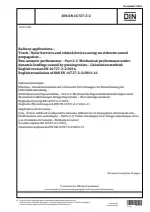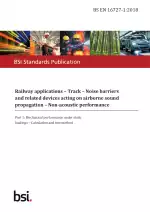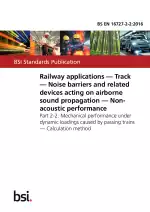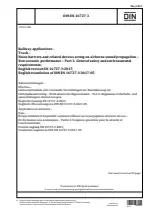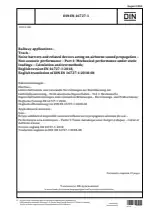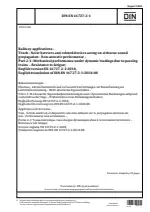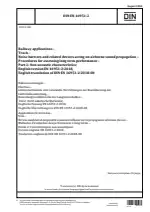Railway Applications - Track - Noise Barriers and Related Devices Acting on Airborne Sound Propagation - Non-Acoustic Performance - Part 2-2: Mechanical Performance Under Dynamic Loadings Caused by Passing Trains - Calculation Method
Also Known As:
The DIN EN 16727-2-2 standard specifies the calculation method for evaluating the mechanical performance of noise barriers under dynamic loadings caused by passing trains.
This European standard considers the loading, load model positions, and internal forces acting on noise barriers due to the air pressure wave in EN 1991-2:2003. It takes into account the vertical and horizontal shapes of the air pressure wave and dynamic effects. The calculation method primarily applies to noise barriers with a post-and-panel structure and piled foundations, but it can also be used for cladding attached to rigid structures.
Annexes within the standard provide additional information, such as an empirical formula for determining the natural frequency of structures with piled foundations in Annex A and an example of applying the calculation method to determine internal forces and moments acting on a mid-post in Annex B. However, it is important to note that the design aspects pertaining to fatigue resistance or other properties of noise barriers are not covered in this standard.
| Descriptors | Aerodynamic characteristics, Aerodynamics, Air pressure waves, Airborne noise, Airborne sound insulation, Definitions, Dynamic loading, Loading, Mechanical properties, Methods of calculation, Noise control, Noise control (acoustic), Noise protection walls, Permanent ways, Post anchorages, Pressure wave, Properties, Rail transport, Railway applications, Railways, Suction load, Stress, Pavements (roads), Airborne sound, Sheets, Superstructure |
| ICS Codes | 93.100 - Construction of railways |
| Language(s) | English |
| File Size | 1.1 MB |

